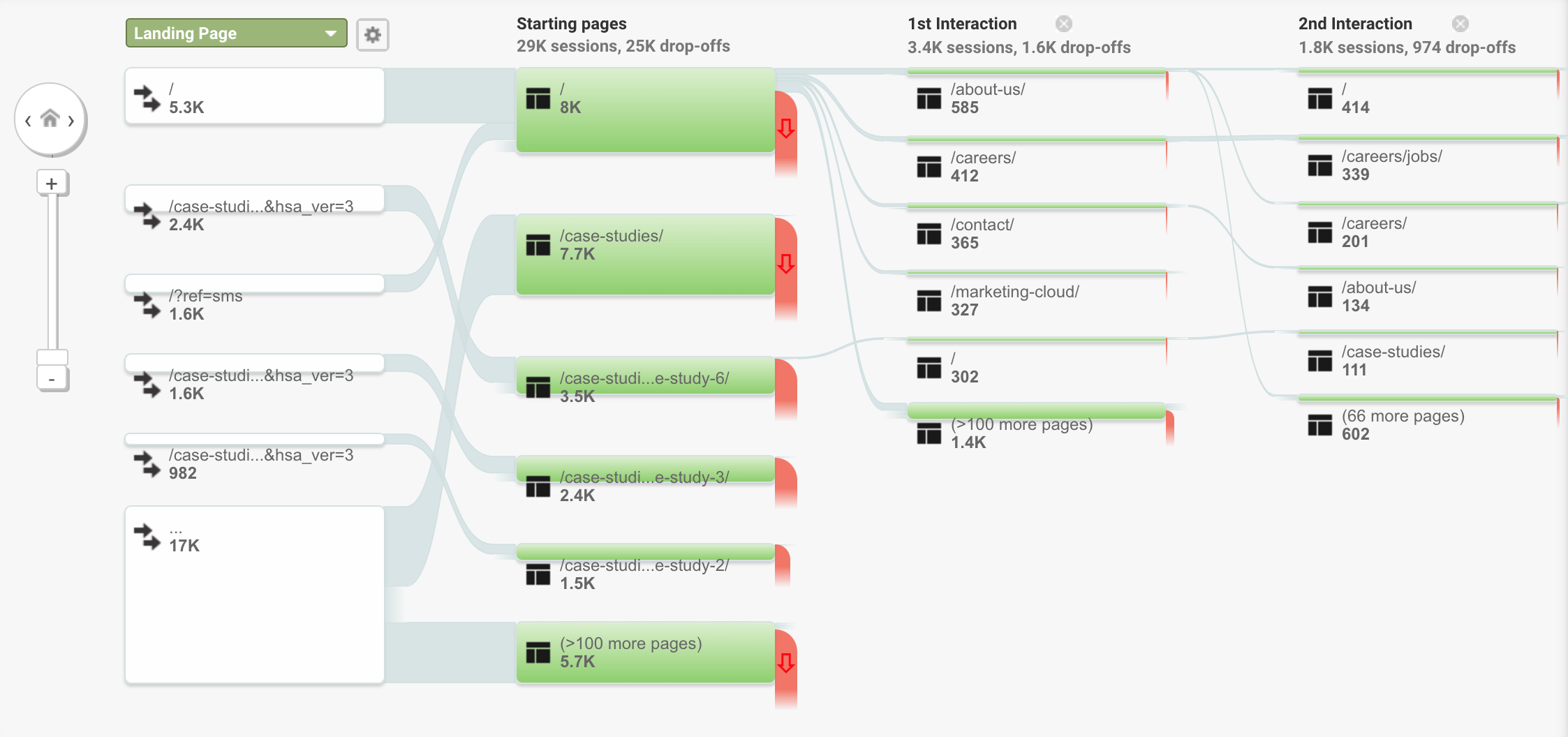Today, customers want personalised and interconnected communications across all channels and B2B customers don’t expect anything less than this.
However, in order to provide personalised communication to your prospects and customers along their journey, you need to first identify how and where they interact with your brand.
And this is where customer touchpoints come into the picture.
What are customer touchpoints?
Customer touchpoints are places where customers interact with the brand throughout their journey till they exist in the brand’s ecosystem.
For example, customers may find about your business online on social media, review websites, business listing websites, search engines, etc. The touchpoints can also be offline like networking events, conferences, trade shows, etc.
Identifying these touchpoints & analyzing the actions taken by the customers can help you make their journey more effective & efficient for your business.
These touchpoints can get you answers to the following questions –
- Where do customers find about your business?
- How do they interact with your brand?
- Do touchpoints help your customers achieve their goals?
- What are the missing touchpoints?
Ways to identify customer touchpoints for your business
Going ahead, you’ll discover 4 simple ways to figure out all the touchpoints where your customers interact with your brand online and offline throughout the buying process.
1. Survey your customers.
If you already have a customer base then you can ask them in a survey about their experience throughout their journey since they came to know about your company till now i.e before purchase, during purchase, and after purchasing.
Now, to get the information out, you can include following questions in your survey –
- What was the best experience during their journey?
- How did they find out about your business?
- What factors impacted the buying decision?
- How do they come to know about new features/services?
2. Set up a customer feedback process.
Having a feedback system in place right after onboarding a new customer can help you get a fresh perspective towards customer journey and experience.
In the feedback form, you can include the questions mentioned above to figure out how they get to know about your solutions and what is the goal they want to achieve with your company.
And to keep up with the evolving customer journey you must ask for feedback from customers at a period of every 3-6 months. This way, you will be able to identify which touchpoints are adding more value to the customers and how others can be optimized for better performance.
3. Organize internal discussion with customer-facing teams.
Who knows your customers better than those who interact with them on a daily basis? The sales, accounts and service teams.
Agree?
If yes, then you should set up internal interviews with these team members to understand how customers interact with them, how they respond & how it can be improved for better customer experience.
For example, the accounts team can tell you the exact process that customers have to go to renew or upgrade their services while sales can tell you how customers interact during the buying process.
So, establish a mechanism to get their feedback constantly like customers to make sure both sides are aligned together for better experience.
4. Examine your website traffic
While the above-mentioned ways can help you identify touchpoints on social media or other channels including offline ones, you don’t want to miss the touchpoints that exist on your own website.
Websites play a very important role in customer journeys because this is where they know more about the company, engage for more information and most importantly, it’s a platform where the company can build credibility with their prospects.
Examining your website traffic can give you a lot of insights on how your customers interact on the website and Google Analytics reports can be a useful tool in identifying these interaction points.
I personally find these two Google Analytics flow reports helpful for customer touchpoint identification –
A. Behavior Flow Report: This flow report lets you visualize the instruction of visitors from one page to the next. The Behavior flow shows the starting pages that visitors used to land on your website, where they go from there i.e interactions and where they drop-off.

Additionally, the Behavior report can help you identify the sources of the traffic, geographical locations they come from and even the roadblocks in the path of the customer journey.
B. Goal Flow Report: This report displays the path that your visitors take on your website to complete one conversion. For instance, if one of your website goal is that the prospects submit the contact form for inquiry than your goal flow may look like this –
The Goal flow shows how many visitors are taking the path you visualized for them to achieve their goal with your business. Also, it reveals if there are points with high funnel exits i.e where visitors skip the flow to visit other pages or leave the website.
Now, using these flow reports, you can understand what path actually visitors take & how it can be made better to help them achieve their goals.
Wrapping up
A customer touchpoint is that interaction point where a brand has opportunities to connect with customers and present the most relevant communication or information that moves them toward a better relationship with the brand.
In marketing functions, these touchpoints play a crucial role in running effective marketing campaigns for lead generation; for the sales, these points can be useful to provide relevant information in the buying process and for the service team, it can help them during reselling or upselling the solutions. So, once the touchpoints are identified, you have to make sure that it is shared and discussed among every department in your organization.
So, what do you think is the best way to identify your customer touchpoints?
